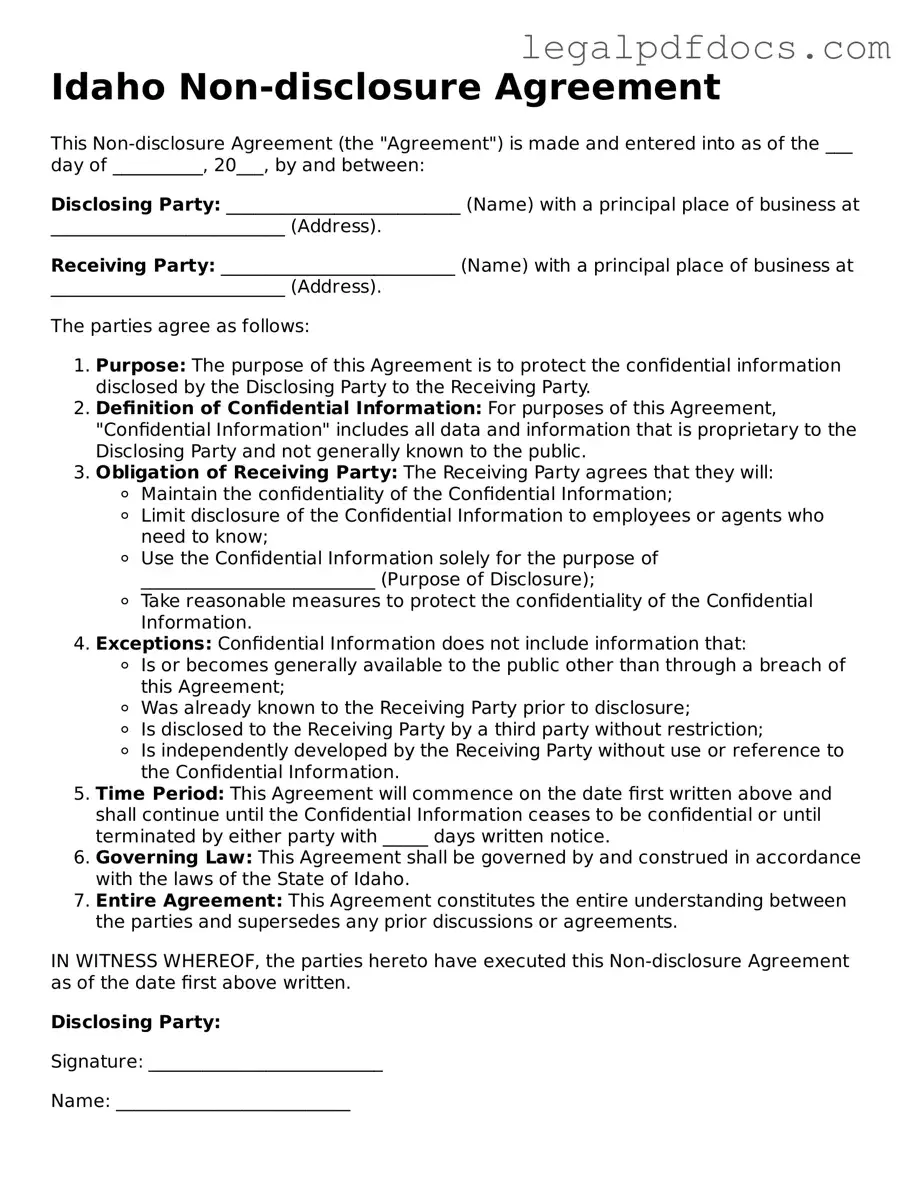The Idaho Non-disclosure Agreement (NDA) form serves as a crucial legal instrument designed to protect sensitive information shared between parties during business transactions or collaborations. This form outlines the obligations of the parties involved, ensuring that confidential information remains secure and is not disclosed to unauthorized individuals or entities. Key elements of the NDA include definitions of what constitutes confidential information, the duration of the confidentiality obligation, and the consequences of breach. Parties typically specify the purpose for sharing the information, whether for a potential partnership, investment, or other business dealings. Additionally, the agreement often includes provisions for the return or destruction of confidential materials upon termination of the agreement. By clearly delineating the terms of confidentiality, the Idaho NDA fosters trust and encourages open communication, which can be essential for innovation and growth in various sectors.
